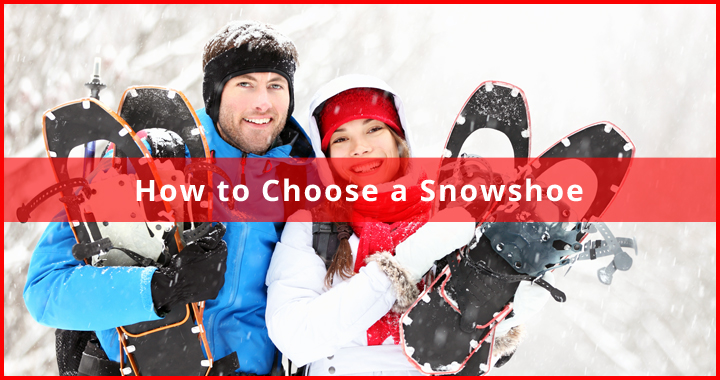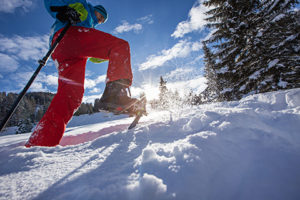Perhaps you have heard from someone or read on the internet many times before that snowshoeing is a fun and rewarding experience. Well, it really is! To make sure that you’re going to have a terrific snowshoeing adventure, it’s of the utmost importance for you to use the right pair of snowshoes.

Snowshoes come in all shapes and sizes, which is great news because it serves as an assurance that there’s a pair that’s right for you. However, this can make getting your hands on the correct pair extra challenging especially if you have no previous experience with snowshoeing.
Do not worry because this article will simplify the daunting task of finding a pair of snowshoes that’s right for your needs.
Keep on reading.
Below you will come across some of the most important considerations when it comes to buying your very first pair of snowshoes which is essential for an unforgettable first snowshoeing adventure!
Weight Range
 There is a world of difference between buying regular shoes and snowshoes in terms of size — when buying sneakers or pumps you will need to take into account the size of your feet, and when buying snowshoes you will need to consider your weight. It’s not just your body weight that’s a factor, but also the weight of the gear you will be using.
There is a world of difference between buying regular shoes and snowshoes in terms of size — when buying sneakers or pumps you will need to take into account the size of your feet, and when buying snowshoes you will need to consider your weight. It’s not just your body weight that’s a factor, but also the weight of the gear you will be using.
Before you head to your preferred snowshoe store online or offline it’s a good idea for you to put on your winter clothes, boots, backpack and others and then weigh yourself. You may also simply weigh everything you will be using in your upcoming snowshoeing hike and add it to your body weight.
Once you have established how much you and your gear weighs, it’s time to pick the right snowshoe size for you. Check out the following table:
Weight Range Snowshoe Size
80 lbs to 120 lbs 20 in to 22 in
120 lbs to 180 lbs 25 in to 26 in
180 lbs to 220 lbs 30 in
220 lbs and above 35 in to 36 in
Model or Conditions
 After establishing the recommended snowshoe size for you based on the combined weight of your body and gear you will be using, it’s time to pick the perfect model for you. Unlike when buying regular shoes, your choice of snowshoe model will have to be based on terrain conditions and not trends.
After establishing the recommended snowshoe size for you based on the combined weight of your body and gear you will be using, it’s time to pick the perfect model for you. Unlike when buying regular shoes, your choice of snowshoe model will have to be based on terrain conditions and not trends.
Did you know that there’s an assortment of snowshoe models currently in existence? They are designed differently to meet different snowshoeing needs. It goes without saying that it’s a definite must for you to purchase and ultimately wear the right snowshoes for the job if you want the most smooth-sailing snowshoeing experience.
Let’s look at the different snowshoe models and their uses:
- Hiking snowshoes. Just like what the name says, hiking snowshoes are perfect for taking a stroll on not-so-challenging snowy terrains such as flat and rolling hills. Therefore, they’re sometimes referred to as recreational snowshoes. They’re suited for newbies as well as budget-conscious shoppers. Best Hiking Beginner Snowshoes
- Running snowshoes. If you are looking to snowshoe and get your intense dose of cardio at the same time, then running snowshoes are the ones that you should get. They’re narrower and shorter than hiking snowshoes, and that’s why they’re suitable for engaging in all kinds of fitness activities on the snow. Best Running Snowshoes
- Backcountry snowshoes. There’s no denying that these snowshoes are meant for hardcore snowshoeing as they’re suitable for terrains with deep snow or ice, as well as steep and rocky areas. That is why they’re made out of durable and lightweight materials, plus they usually have steep price tags. Best Backcountry Snowshoes
The Takeaway
Purchasing snowshoes is a more complicated task than buying regular shoes. Aside from the weight range and model, there are also a few other considerations such as the bindings, frames and crampons. It’s a good idea to get the recommendations of a trusted vendor especially if you have never purchased snowshoes before.
